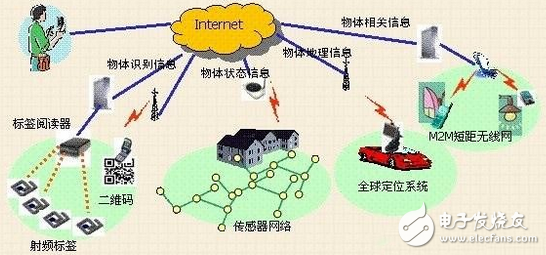The Internet of Things is a hot topic recently. Today, Xiaobian introduces you to the technical architecture of the Internet of Things.

First, let's take a look at the concept of the Internet of Things: the concept of the Internet of Things is based on the concept of the Internet, which can extend and extend its users to any item and item, so that things and things can exchange information and communication. . To be somewhat abstract, let's take an example of the image: In the future, each of us can control our home's door locks, water heaters, TVs, lights, etc. through any mobile phone where we can connect to the Internet. At that time, if the courier sends the courier and you are not at home, then you can control the camera on the door through the mobile app to see who the visitor is and automatically open the door for him. Is it convenient? J, this is the convenience that informationization brings to our lives.

The Internet of Things has the following characteristics:
1. First of all, it is centered on various sensor technologies. A large number of various types of sensors are deployed on the Internet of Things. Each sensor is an information source. Different types of sensors acquire different information content and information formats. The data obtained by the sensor must be periodically collected and transmitted to the cloud at a certain frequency and analyzed and reflected to the end user.
2. The Internet of Things is a new type of network built on the Internet (TCP/IP). Its technical foundation and core are still the Internet. It integrates with the Internet through various wired and wireless networks to transmit the information of objects in real time and accurately. The information collected by the sensor needs to be transmitted through the Internet. Due to its extremely large number, in the transmission process, in order to ensure the correctness and timeliness of the data, higher requirements are placed on the bandwidth and software of the Internet.
3. In addition to providing sensor connectivity, the Internet of Things itself has the ability to intelligently process data and enable simple, intelligent control of objects. The Internet of Things combines sensor technology with intelligent data processing technology, coupled with the comprehensive application of various technologies such as cloud computing and pattern recognition, and the future application fields are limitless.

Let's take a look at the network architecture of the Internet of Things:

From the above figure we can see that the IoT side contains:
1) IoT gateway, mainly responsible for direct communication with the Internet (such as home gateway, car networking gateway)
2) Satellite cellular network, which is responsible for IoT devices (such as mobile phones, wearable devices, etc.) running on cellular networks.
3) IoT relay devices (in some cases, the Internet of Things also requires relay devices)
4) Internet of Things equipment
The devices in the Internet of Things mainly access the network through the following methods:
A) WIFI connection
B) Bluetooth (this is already very familiar, beacon devices are connected to the phone through this technology)
C) Zigbee (mainstream low-power wireless network protocol)
D) RFID (electronic tag technology, equivalent to the identity card)
E) GPRS, 2G, 3G, 4G, etc.
The above only lists the mainstream access methods. There are actually many other technologies under development.
Through the above introduction, everyone should have a certain understanding of the use of the Internet of Things, and how technically it is.
Lithium Ion Phosphate Battery,12V Lithium Ion Battery,24V Lithium Ion Battery,12V Lithium Ion Battery
Jiangsu Stark New Energy Co.,Ltd , https://www.stark-newenergy.com